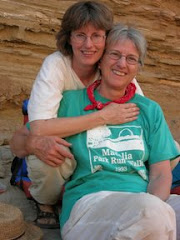 You recycle. You replace conventional light bulbs with energy-saving bulbs. You turn down the heat and avoid using air conditioning. You buy local, organic produce. You walk or bike, and you may even own a fuel-efficient car.
You recycle. You replace conventional light bulbs with energy-saving bulbs. You turn down the heat and avoid using air conditioning. You buy local, organic produce. You walk or bike, and you may even own a fuel-efficient car.But have you considered the carbon footprint of your final act on earth? As in your funeral?
Conventional funeral practices are not usually “green.” Embalming fluids, hardwood and metal caskets, concrete vaults, and the gasoline, pesticides, and herbicides required to maintain a traditional cemetery are not environmentally-friendly. In addition to being better for the environment, green funerals usually cost much less than “traditional” funerals.
Green cemeteries have opened in the UK and Europe, with the US starting to follow suit. Click here for a list. If you live far one of the few natural burial grounds in this country, you still can minimize the environmental impact of your final leave-taking if you follow these tips.
1. AVOID EMBALMING. Let your body return to the earth naturally, without toxic chemicals.
2. AVOID METAL OR HARDWOOD CASKETS. Cooperate, instead of interfering with, the natural process of decomposition. Choose a pine, bamboo, jute, or cardboard casket, or simply have a shroud.
3. AVOID concrete gave liners (vaults). They’re not required by law. They are simply standard practice in conventional cemeteries.
4. If there is no conservation cemetery nearby, ask your local cemeteries about a natural burial area. Many are designating space to meet the growing demand for green burials.
5. If natural burial is not feasible, choose cremation. Although burning requires fossil fuels and may release mercury and other toxic chemicals into the environment, cremation is much greener than conventional embalming and burial practices.
You can also investigate a new technology: Resomation. This is an alkaline hydrolysis process that takes about the same time as cremation but uses less energy, produces less CO2, and avoids putting mercury and other contaminants into the atmosphere. It returns the body to its organic components, leaving only a white ash and nutrient-rich water, which could fertilize a memorial tree. Resomation is currently offered in only a few places in North America, including the Mayo Medical School's body-donor program in Minnesota.
 No matter which way you want to go, those who will make decisions for you should know your final wishes. Put your instructions in writing. Discuss them with your family and friends. A funeral directive can be part of your Health Care Directive, which we all should have. There are free downloadable forms on line. One that we like, “Five Wishes,” is comprehensive and walks step by step through excellent questions. It’s available here.
No matter which way you want to go, those who will make decisions for you should know your final wishes. Put your instructions in writing. Discuss them with your family and friends. A funeral directive can be part of your Health Care Directive, which we all should have. There are free downloadable forms on line. One that we like, “Five Wishes,” is comprehensive and walks step by step through excellent questions. It’s available here.So the next time you take out the newspapers and cans, imagine how you want to conduct your final act of recycling. Act now so that, when the time comes, you can Go Out Green.
For more information about green burial, see the New York Times article “Home Burials Offer an Intimate Alternative,” read Grave Matters by Mark Harris, or read Going Out Green by Bob Butz.


No comments:
Post a Comment